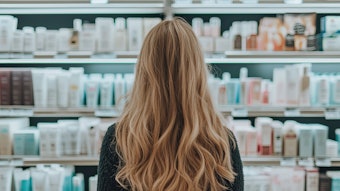
Read the full article in the July/August 2021 digital edition. . .
Green chemicals including bioalcohols and biopolymers are projected to expand at a CAGR of 8.6% between 2020 and 2027.1 The Circular Economy Handbook estimates the circular market will present a $4.5 trillion opportunity by 2030,2 accelerated by the embrace of new business models and disruptive technologies. Sustainability is a key priority for beauty; according to a recent Mintel blog,3 consumers are choosing to buy fewer plastic products and expecting brands to make their products more sustainable. “This expectation is pushing beauty brands toward new sustainable innovations such as waterless beauty, upcycling, carbon neutrality and reusable or refillable packaging solutions,” the blog stated.
Each facet of this macrotrend hinges upon a key element: enabling technologies. James Clark, Ph.D., of the Green Chemistry Centre of Excellence at the University of York, UK, spoke to this element just four years ago (2017) in an interview with Cosmetics & Toiletries about the then-current status of green chemistry and sustainability in the industry and personal care.
“Many are recognizing that green chemistry is a good place to be,” he said.4 “It may not be called green chemistry but references are made to biorefineries, bioresources and the circular economy.” He added that in terms of the way the subject has developed, it’s become much more holistic. “In the early days of green chemistry, people talked about the ways chemicals were made and how they could be greener, safer, more efficient—all good things, and all still true today. But nowadays, people are keener to embrace the lifecycle. They’re interested in the feedstocks and raw materials more than they used to be.” Indeed they are, as cosmetic ingredient launches since this interview has emphasized.
Clark continued5 that another big thing worth referring to, connected to feedstocks, is platform molecules. “The petrochemical industry has traditionally been built on a small number of molecules like benzene and ethylene, propylene—i.e., half a dozen or so critical molecules. … They take oil, they fractionate it and they make these critical molecules and then build everything up from that. There are 100,000 (or thereabouts) different chemicals used in the chemical industry. A lot of them come from that small number of platform molecules.” He added, of course, that many of these come from unsustainable resources, so the industry is asking: What’s the alternative?
“People think about biomass in some shape or form [for] renewable biomaterials,” he said. “Can you turn those into the same platform molecules? The answer may not entirely be ‘no,’ but…it’s very difficult.” He added that people have been trying to achieve this, and he gave one example of success.
“Some of the breakthroughs in the bio-based space have been in Brazil, for obvious reasons—they’re sitting on fabulous resources… There’s a big chemical company there called Braskem that has been very actively working on bioethanol, and we now have the world’s first second-generation bioethanol plants in operation. … This is an enormous breakthrough for future uses of bioethanol, be it for fuel or as a chemical feedstock.
“…Braskem had the bright idea that actually, ethanol isn’t just fuel but it’s also a platform molecule, so you can turn ethanol into all sorts of other chemicals. What they did was [turn] bioethanol into bioethylene, … then they made biopolyethlene, so you can now buy something called green polyethylene. You’ll pay something like a 30% premium for this, [although] it’s identical to ordinary polyethylene,” he said, adding that there is a way to tell if a chemical is bio-derived. “You can tell if a chemical is derived from a bioresource through carbon 14 labeling, so you could measure that content. In the future, with products, this is a way you could prove they are bio-based.”
Clark noted, however, that cost is a drawback to bioethanol and its derivatives. “While the technology is interesting, it doesn’t really address the problem. It’s more expensive to make the ethanol and turn it into ethylene. But maybe, in the future, what we need to be thinking of is making new platform molecules that we can make easily from biomass—I mean big volume biomass; things like wood …It’s a great commercial opportunity for companies to make a new family of molecules easily from biomass and then use these molecules to make a bunch of other things. I think that’s an exciting development because it’s opening up a new area.” This area, according to Clark, relates to carbohydrate chemistry. “It’s all connected to carbohydrates, … sugars that come from wood, biomass, whatever—you turn carbohydrates into other carbohydrates. Funny enough, it’s a subject that almost died [off] but it’s got a new lease on life. And then, of course, you’re going to need new chemistries to turn those platform chemistries into exciting new molecules that then go into the sorts of products your industry and many others need.”
It’s only been four years since this interview but green, sustainable, renewable, upcycled, etc., technologies have made significant strides in terms of efficiency and cost. How might these address current trends and drive the cosmetics and personal care industry forward? We asked several industry experts to share their views. Following are their responses.
Minimal Impact, Upcycled and Sustainable Ingredients
“As consumers became increasingly aware of the environmental impact of plastic waste, beauty product manufacturers have attempted to reduce the impact of their manufacturing processes and waste generated from consumer product usage,” writes Denise Costrini, marketing manager of skin care, for Ashland. “Early efforts focused on plastic bottle recycling or size reduction. While these efforts continue, beauty companies have now moved toward the sustainability of the ingredients themselves.” She added that Ashland’s “unbottling beauty” (ubb) line is an example of this approach. “We have created a range of enabling ingredients and formulations [to support the development of] more eco-conscious products and minimize their impact on our planet.”
The demand for ingredients with higher natural content has been on the rise for some time, with the focus shifting more recently to biodegradable ingredients where possible. “These trends will continue, with further potential for upcycled ingredients to minimize waste and reduce impact,” Costrini notes.
. . .Read more in the July/August 2021 digital edition. . .
References
- Reportlinker (2020, Jul 7). Global green chemicals industry. Available at: https://www.globenewswire.com/news-release/2020/07/07/2058992/0/en/Global-Green-Chemicals-Industry.html
- Lucy, P., Spindler, W. and Dutton, J. (2021, Feb 15). A circular economy isn’t just planet-friendly. It’s a trillion dollar market opportunity. Available at: https://theprint.in/opinion/a-circular-economy-isnt-just-planet-friendly-its-a-trillion-dollar-market-opportunity/604408/
- Fisher, A. (2020, Dec 16). Sustainable skin care in 2021 and beyond. Available at: https://www.mintel.com/blog/beauty-market-news/sustainable-skincare-in-2021-and-beyond
- Grabenhofer, R. (2017, Feb 3). Green chemistry evolves around lifecycle and necessity. Available at: https://www.cosmeticsandtoiletries.com/research/methodsprocesses/Green-Chemistry-Evolves-Around-Lifecycle-and-Necessity-412707013.html











